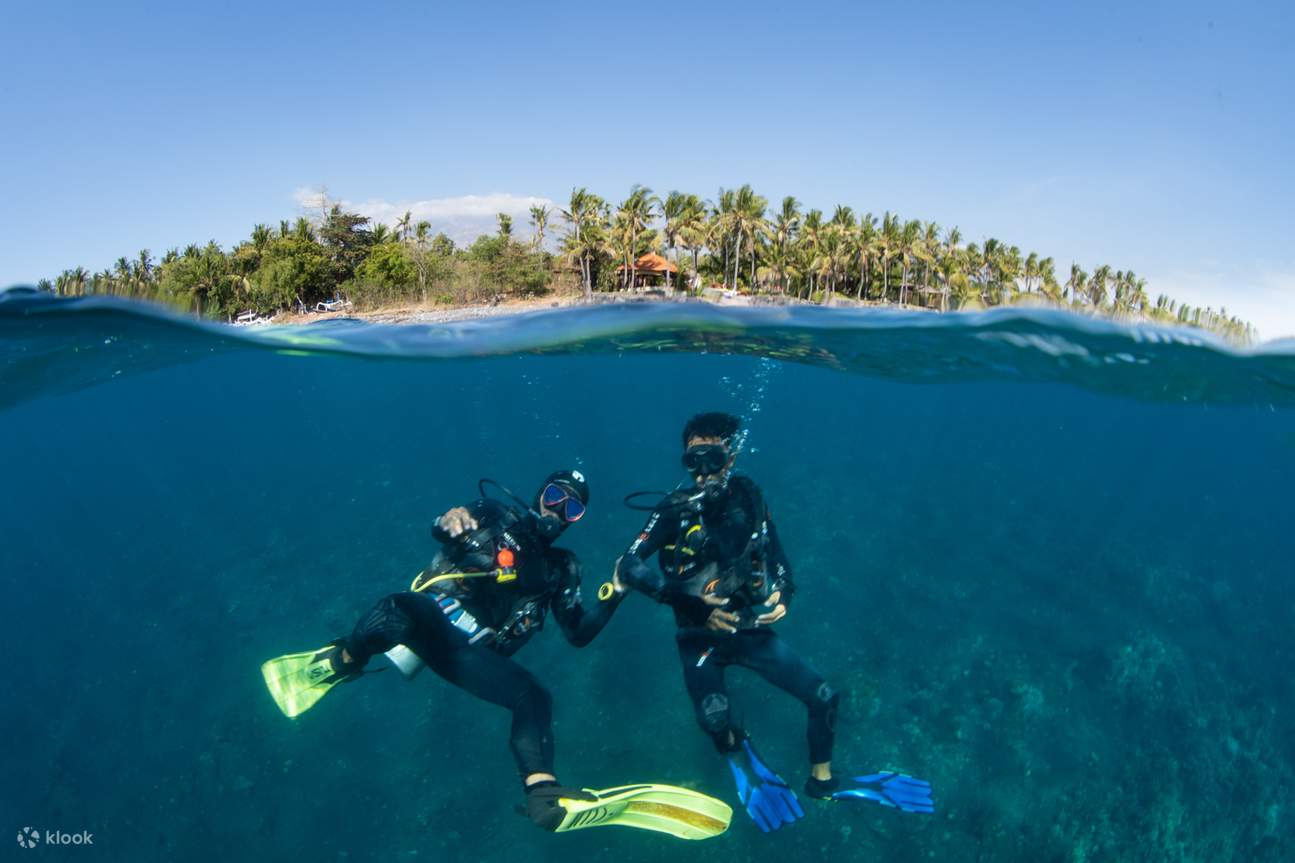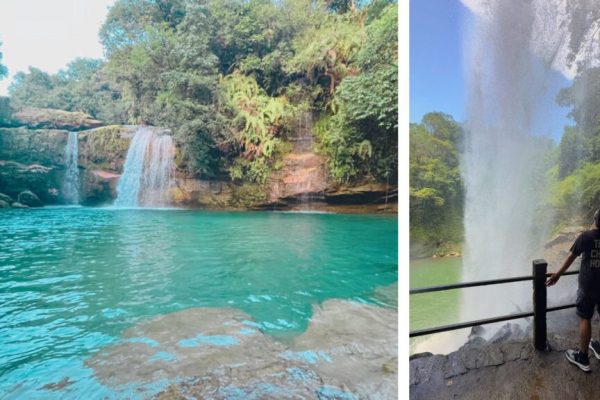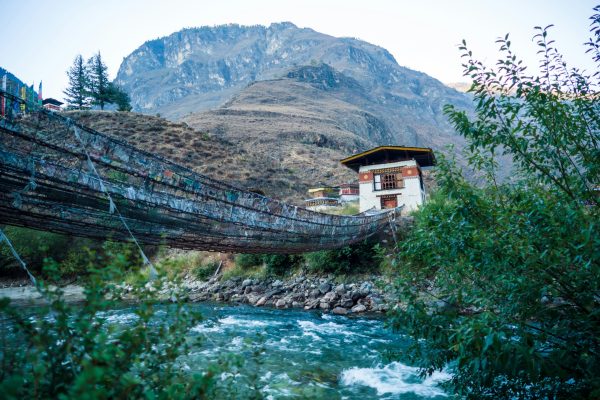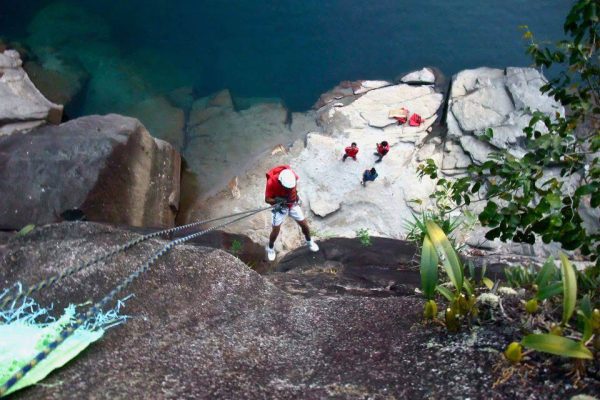Bali is more than just rice fields, temples, and vibrant nightlife. Beneath its turquoise waters lies a world full of colorful coral gardens, exotic marine life, and shipwrecks whispering secrets from the past. Whether you’re floating above reefs or diving deep into the ocean, Bali offers unforgettable underwater adventures for beginners and seasoned explorers alike.
In this guide, we’ll dive into everything you need to know to start your snorkeling or scuba diving journey in Bali. From the best diving spots in Bali to safety tips and what gear you need—we’ve got you covered!
🌊 Why Choose Bali for Underwater Adventures?
Bali has earned a reputation as a paradise for water lovers. Surrounded by the warm waters of the Indian Ocean, it offers crystal-clear visibility, a wide variety of dive sites, and incredibly rich marine biodiversity.
-
Over 400 species of reef-building coral
-
More than 950 species of reef fish
-
Warm water temperatures year-round (26°C to 30°C)
Whether you’re an underwater photographer, a thrill-seeker, or someone looking to try snorkeling for the first time, Bali welcomes all.
🐠 Snorkeling in Bali: A Perfect Start for Beginners
If you’re new to water adventures, snorkeling is a great way to begin. It’s simple, fun, and gives you a peek into the vibrant marine world without needing complex training or gear.
📍 Best Places to Snorkel in Bali
-
Blue Lagoon (Padang Bai) – Calm waters, ideal for beginners, and home to angelfish, moray eels, and sea turtles.
-
Amed Beach – Famous for its black volcanic sand and healthy reefs.
-
Menjangan Island – Part of West Bali National Park, this spot offers some of the clearest waters and dramatic coral walls.
-
Tulamben Beach – This is not only great for divers but also for snorkelers who want a glimpse of the legendary USAT Liberty Shipwreck.
If you’re wondering what the activities in Tulamben Beach are, besides diving, you’ll be thrilled to know you can snorkel directly above the famous shipwreck. The coral-covered wreck lies just 5 meters below the surface, making it visible even without scuba gear.
🤿 Scuba Diving in Bali: Take the Plunge
Ready to go deeper? Scuba diving unlocks a whole new world of exploration. Whether you’re trying it for the first time or earning a certification, Bali offers courses and dives tailored for all levels.
🔥 What Makes Bali Ideal for Scuba Diving?
-
Varied Dive Sites: From wrecks and walls to muck diving and drift dives.
-
Marine Life: Manta rays, reef sharks, turtles, and the elusive Mola Mola (sunfish) during July–October.
-
Dive Schools: Plenty of certified operators offering PADI and SSI courses in English and other languages.
🏝️ Exploring the Best Diving Spots in Bali
Let’s break down some must-visit dive locations across the island:
1. Tulamben
-
Highlight: USAT Liberty Shipwreck
-
Depth: 5–30 meters
-
Difficulty: Beginner to Intermediate
-
Fun Fact: The wreck is from WWII and lies just meters from the shore.
2. Nusa Penida
-
Highlight: Manta Point & Crystal Bay
-
Best for: Manta rays and Mola Mola sightings
-
Caution: Strong currents; ideal for experienced divers
3. Amed
-
Highlight: Coral gardens and artificial pyramids
-
Great for: Night dives and macro photography
-
Added perk: Peaceful village vibes
4. Menjangan Island
-
Highlight: Coral walls and calm waters
-
Known for: Excellent visibility (up to 50 meters)
-
Located in: Bali Barat National Park
5. Padang Bai
-
Highlight: Blue Lagoon and Jepun
-
Great for: Macro life like nudibranchs and frogfish
🧳 What You Need to Start
If you’re planning your first snorkeling or scuba trip, here’s a quick list of essentials:
🏊 Snorkeling Gear
-
Mask and snorkel (fit is key!)
-
Fins
-
Rash guard or wetsuit
-
Reef-safe sunscreen
🤿 Scuba Diving Gear (Usually Provided by Dive Operators)
-
BCD (Buoyancy Control Device)
-
Regulator
-
Tank and weights
-
Dive computer
-
Wetsuit
-
Mask and fins
Tip: Always double-check the condition of rental equipment and ensure the dive operator is PADI or SSI certified.
📅 Best Time to Dive and Snorkel in Bali
-
Dry Season (April to October): Best visibility and calmer seas.
-
Mola Mola Season: July to October around Nusa Penida.
-
Avoid Rainy Season (December to February): Lower visibility, especially near the shore.
🧑🏫 Learn Before You Dive: Training and Certification
If you’re serious about scuba diving, consider getting certified. It only takes a few days and ensures safety and confidence underwater.
🎓 Top Certifications
-
PADI Open Water Diver – Globally recognized, ideal for beginners.
-
SSI Open Water Diver – Similar to PADI, often more affordable.
-
Discover Scuba Diving (DSD) – A one-day introduction, no certification required.
Bali is one of the most budget-friendly places in the world to get certified. Courses start at around $300 USD and often include accommodation and gear.
🐢 What Marine Life Can You Expect?
Here’s a taste of what you might see while diving or snorkeling in Bali:
| Creature | Best Location | Notes |
|---|---|---|
| Manta Rays | Nusa Penida | All year round |
| Mola Mola (Sunfish) | Crystal Bay | Best seen July to October |
| Sea Turtles | Amed, Padang Bai | Common sight |
| Reef Sharks | Gili Tepekong, Nusa | Often harmless and curious |
| Nudibranchs | Tulamben, Amed | Macro photographer’s dream |
🧘 Safety Tips for Beginners
-
Never dive alone.
-
Equalize your ears often.
-
Stay hydrated and avoid alcohol before diving.
-
Respect marine life – no touching or chasing!
-
Always listen to your dive guide or instructor.
📸 Tips for Underwater Photography
Want to capture the magic? Here’s how:
-
Use a waterproof camera or GoPro with a red filter.
-
Dive slowly—less movement equals better shots.
-
Focus on one subject (coral, fish, or diver).
-
Try during midday when sunlight is strongest.
🌍 Eco-Friendly Diving and Snorkeling
Bali’s reefs need protection. Be a responsible explorer:
-
Use reef-safe sunscreen.
-
Avoid standing on or touching coral.
-
Say no to plastic—bring reusable bottles.
-
Support eco-certified dive shops.
💡 Fun Facts
-
Bali has over 50 dive sites across the island.
-
The USAT Liberty wreck is over 120 meters long.
-
Mola Mola can weigh over 2,000 kg and grow up to 3.3 meters in length.
🙋 FAQs: Snorkeling & Scuba Diving in Bali
Q1: Can I dive without knowing how to swim?
A: For snorkeling, swimming is helpful. For scuba, non-swimmers can try “Discover Scuba Diving” under close supervision, but swimming skills are recommended for certification.
Q2: Is diving in Bali safe?
A: Absolutely, especially if you go with licensed operators and follow safety rules.
Q3: How deep can beginners go?
A: Certified beginners can go up to 18 meters. Introductory dives usually stay under 10 meters.
Q4: Are there any age restrictions?
A: Yes. Most scuba courses require a minimum age of 10 years. Snorkeling can be done by younger children with proper safety gear.
🏁 Final Thoughts
Whether you’re floating above coral gardens or swimming beside a graceful manta ray, exploring the underwater world in Bali is nothing short of magical. Start small with snorkeling or take the plunge into scuba diving—either way, you’re in for a once-in-a-lifetime experience.
With its calm waters, vibrant reefs, and amazing marine creatures, it’s no surprise that the best diving spots in Bali are considered some of the finest in the world. And if you’re heading to Tulamben Beach, make sure to check out the thrilling activities in Tulamben Beach both above and below the surface.
So pack your gear, book your dive, and let Bali’s ocean adventures take your breath away—literally!









